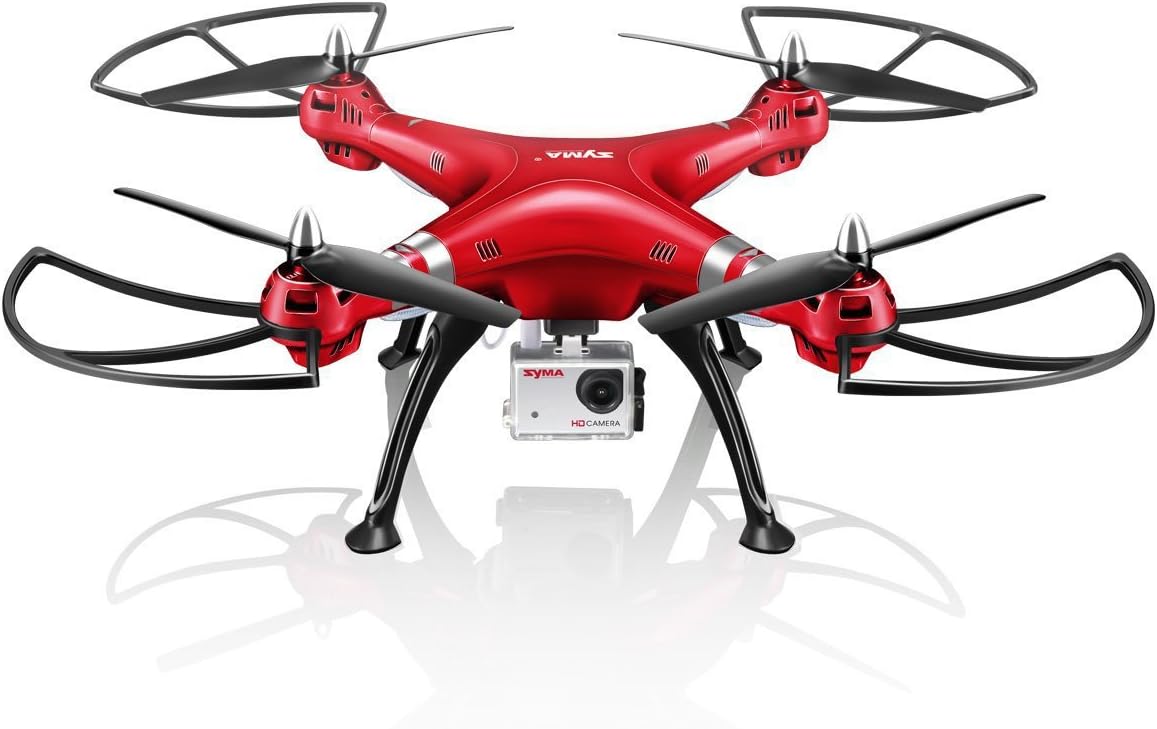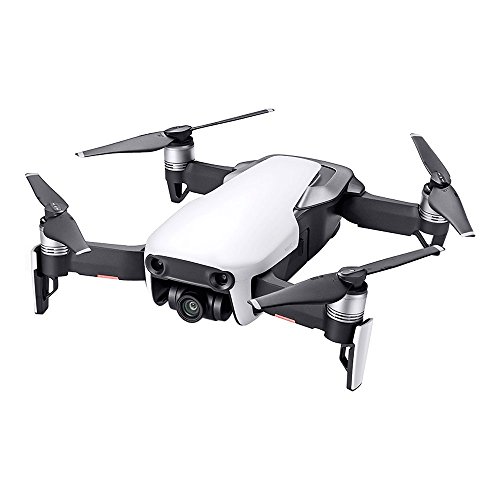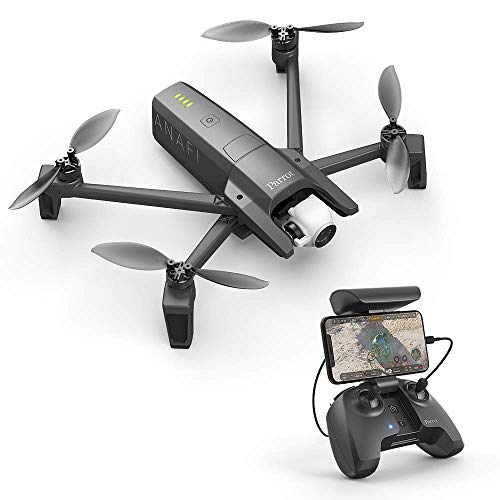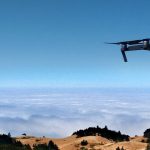Fastest Drones You Should Buy
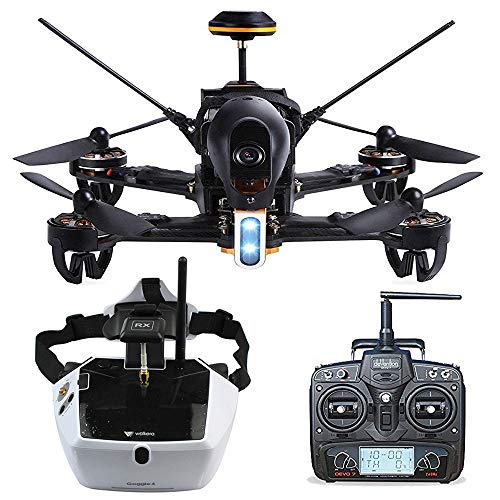
After delving into the drone market, the Walkera F210 Professional Deluxe Racer stands out as the fastest drone available, offering adjustable speed calibration. Read more about it and explore the rest of the top 5 fastest drones below.
The Fastest Drones for 2024:
Fastest Drone: Walkera Runner F210 Professional Deluxe Racer
- Bow and streamlined design, standard...
- SP racing F3 flight control: F210 is...
- Night vision HD camera: The camera has...
- Powerful motor design: With brushless...
- Mushroom antenna: Ultra-long...
The Walkera F210 is surely one of the best racing drones ever; and also one of the best-sellers in the racing category. Thanks to its intimidating super chopper design and programmed with the latest F3 flight system, the acceleration is just phenomenal, especially when it reaches peak speeds. It also includes a night vision with clear scope and a Devo 7 transmitter that emits strong connections even at maximum distance. The controls are highly responsive too. It is one of the best consumer-based racing drones ever created and a UAV that can test the bounds of peak speed. Just don’t be surprised if the price is expensive.
Fastest Value Drone: EMAX Hawk Sport
- 5 inch propellers
- Speeds up to 105 MPH
- Go Pro compatible
- EMAX Nano RHCP SMA Antenna
- Spare Canopy
The EMAX Hawk Sport is the cheapest of the bunch but certainly not the most fragile. The EMAX was one of the very first drone brands that popularized the whole racing competition and paved way for other brands to compete with them. Their flagship Hawk Sport drone can reach up to 105 mph, even without configuration. It also uses a spare canopy and includes a GoPro mount if you need to attach a HERO camera. The speed-controlling system can accept up to 25.2V, which is how it reaches more than 100 mph. It is also a great drone for both intermediate and expert drone pilots.
Fastest FPV Drone for Beginners: VIFLY R130 BNF
The VIFLY R130 BNF is a good trainer drone that hones your skills at drone racing. Not only is the VIFLY strong, but it is also very beginner-friendly. It may only be 130mm but there is no doubt that its sturdy crash-resistant build and can reach more than 100 mph. It only has 8 minutes of battery life which is why the VIFLY is very cheap to buy. The controls are very simple to do and it is ready to use upon unboxing. Let the VIFLY R130 BNF be your entry-level drone whether you wish to join competitions or do casual race matches with peers.
Fastest Lightweight Racing Drone: Walkera Runner 250 Pro
The Walkera Runner 250 Pro is better to use for intermediate and advanced drone racers. Thanks to the Runner 250 Pro’s carbon fiber design, its light build makes it good for agile moves and crucial turns in the track. You also have a ton of design customization and performance options for you to tweak on, thanks to its easy assembly and disassembly. It may only last up to 12 minutes, but every second of this drone is nothing but fun. With all that said, the Walkera Runner 250 Pro is just the best when it comes to aerobatic types of races.
Fastest Premium Drone: Walkera Furious 215
The infamous Walkera Furious 215 is not just about style, it’s about speed too. This quadcopter drone sports a unique simple yet fashionable design. The drone is ready-made but you can freely tweak it in order to level up its performance during a competition. It is great for both racing and aerobatic showmanship. The brushless motors, 5040 5-inch propellers and 45c LiPo make the Walkera Furious 215 a beast in the air along with its zero-latency F3 flight controller. This is also a heavy favorite among expert drone racers because of personalized the Furious 215 can be with the right calibrations.
Conclusion (Why I Would Buy It)
While they do not set record-breaking speeds (because the quickest drones are military-based), these fastest drones to buy are fun to use and are still hasty enough. And if you ask me what I would buy first, it is the amazing Walkera F210 Professional Deluxe Racer. It is easily the fastest of the bunch. If you prefer something cheaper, you should get the EMAX Hawk Sport or the VIFLY R130 BNF instead; they may be cheap but they are certainly not slow. And if you desire a carbon-based UAV, the Walkera Runner 250 Pro is a strong choice. But when it comes to premium specs, no other drone is quite like the Walkera Furious 215.
Drone Buying Guide
Speed
It really is not necessary to buy the best drone with very fast top speed but if you ever want to get into the drone racing scene, you will need to buy a serious type like the EMAX Hawk Sport or Walkera Furious 215. Mostly, FPV drones have default top speeds already but you should be able to calibrate them in order to make them rise above and beyond (both figuratively and literally).
Casual or Competitive
A lot of people buy an FPV drone because they want to get serious with drone racing. But in many cases, you don’t even need to buy the most competitive or “meta” drone out there. FPV drones are all about fun too; hence why a lot of them are ready to use without needing to configure any further.
Brushless Motors
If you do want an FPV drone built for racing, the first component you need to look for is the motors. If they are brushless, they are always made for competitive racing. Case in point, the ARRIS X-Speed.
Ready to Use vs DIY
Most drones are already ready-made as you unbox. Others may require you to buy a separate remote controller while others prefer DIY. Of course, those that say DIY is the best are the guys that already have a vast knowledge of drones. If you prefer to go around casually, just stick with the launch-ready drone.
A racing drone can reach up to speeds of 100 to 120 mph. While some drones already have default top speeds, an experienced pilot can tweak it and go a level higher, reaching more than 125 mph to 130 mph. However, the faster the default drone speed is, the less welcoming it is for beginners.
Much like vehicles, some drones are designed for everyday use while others are for racing. So no, not all FPV drones are fast. Some are, instead, better off as stunt drones while others are for casual purposes.
There are many choices out there but I highly recommend the Walkera F210 and the EMAX Hawk Sport since they offer multiple modes that make it more welcoming for the less experienced drone racers. Yet, there are also many choices beyond this article such as from Yuneec and Xiaomi.
That depends. Some racing drones cost at least $300 while the faster ones are around the $500 mark and higher. Of course, a high price does not always guarantee top speed. Some cheaper ones like the EMAX may be slower compared to others but calibrating it can reach more than 105 mph.













